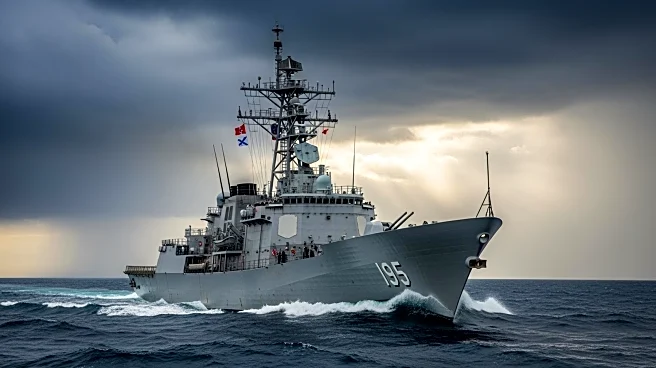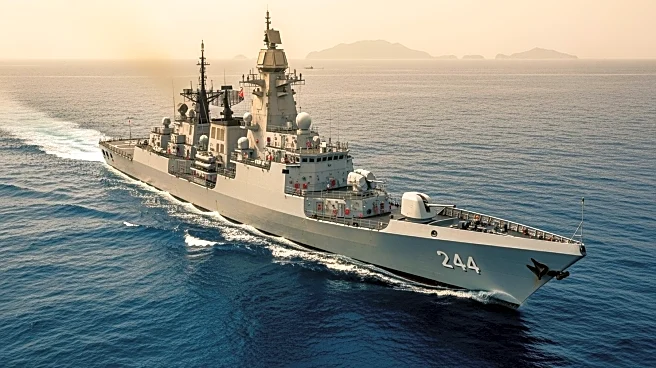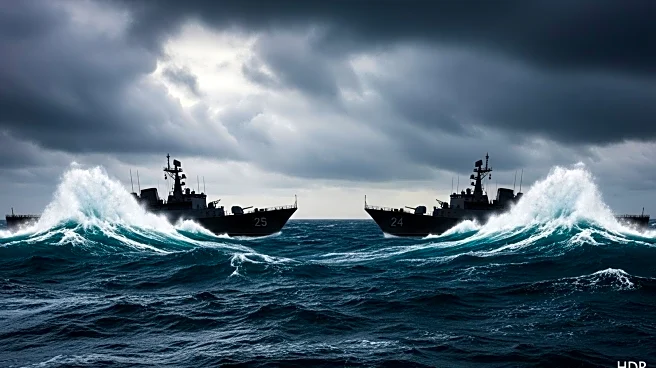What's Happening?
India has extended its naval reach near China, deploying a warship to South Korea as part of a broader Indo-Pacific mission. The Indian frigate INS Sahyadri arrived in Busan, South Korea, marking the first-ever
naval drill between the two countries. This deployment is part of India's strategic alignment with countries like the United States, Australia, and Japan, aimed at countering China's growing presence in the Indian Ocean. The exercise includes both harbor and sea phases, with South Korea deploying the frigate ROKS Gyeongnam for the sea phase. The move comes as China seeks to militarize the Yellow Sea, maintaining a strong naval presence in disputed waters.
Why It's Important?
The deployment of the Indian warship underscores the strategic tensions between India and China, both nuclear-armed nations with a long-standing border dispute. India's actions reflect its efforts to strengthen ties with China's regional rivals and assert its presence in the Indo-Pacific region. This development is significant as it highlights the geopolitical importance of the Indo-Pacific, a region increasingly recognized for its strategic value. The naval drill with South Korea is a culmination of years of planning and discussions, emphasizing the growing military cooperation between the two nations.
What's Next?
The future deployment of the Indian warship remains uncertain, with potential transit through the Taiwan Strait, an area claimed by China. This could further escalate tensions in the region, drawing reactions from major stakeholders like China and the United States. The ongoing naval exercises and strategic partnerships are likely to continue, as India seeks to bolster its maritime security and counter China's influence.
Beyond the Headlines
India's deployment is part of its 'Aatmanirbhar Bharat' vision, a policy aimed at making the country self-reliant in defense and other key areas. This reflects a broader trend of nations seeking to enhance their military capabilities and strategic autonomy in response to regional security challenges.













